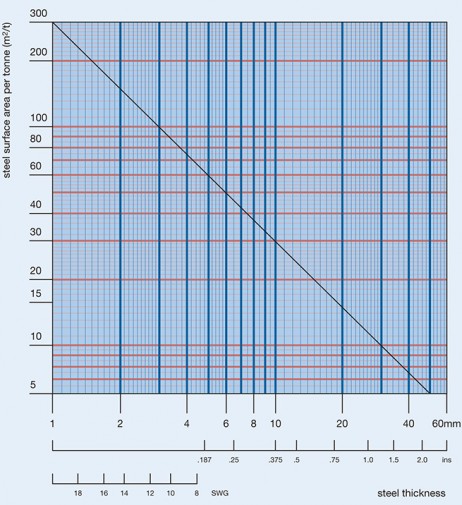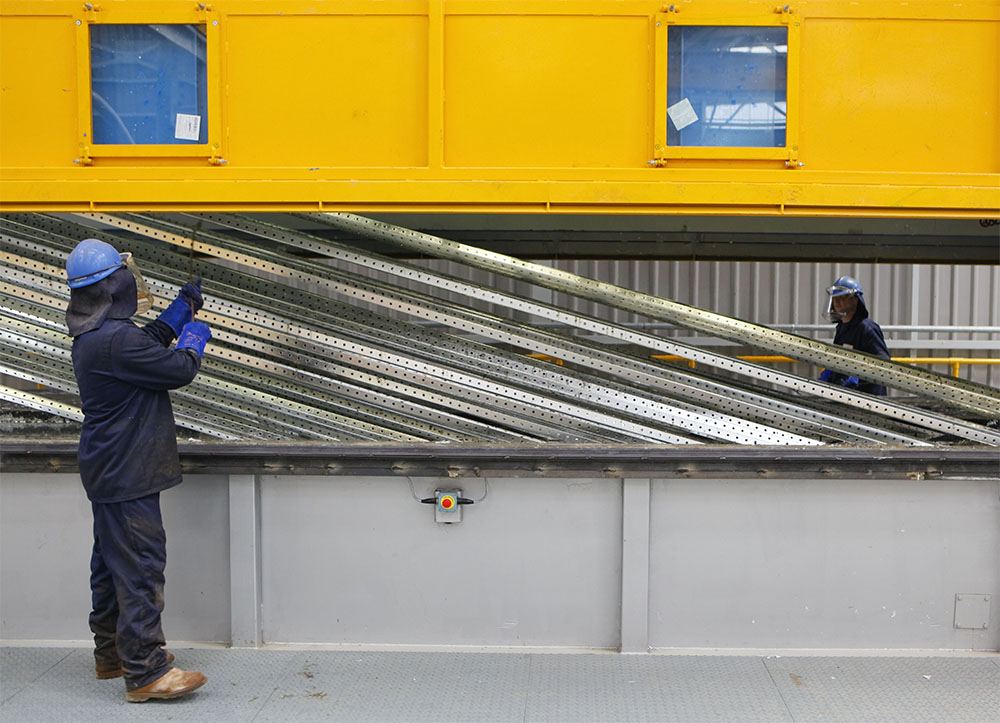To ensure the best quality and technical back-up service, it should be stated that the work be "processed by a member of Galvanizers Association".
The basic specification for hot dip galvanized coatings on iron and steel articles is defined by a single standard, EN ISO 1461 ‘Hot dip galvanized coatings on iron and steel articles – specifications and test methods’. However, there are some exceptions to this standard (see thicker coatings below).
BS 729 was the old British galvanizing standard for hot dip galvanizing. It is now superseded by (BS) EN ISO 1461.
What is the thickness of the hot dip galvanizing coating?
When hot dip galvanizing is specified, the surface of the steel is completely covered with a uniform coating whose thickness is determined principally by the thickness of the steel being galvanized (see Graph 1 below).
This is an important advantage of the galvanizing process; a standard coating thickness is applied almost automatically. The actual thickness of galvanized coating achieved varies with steel section size, surface profile and surface composition. Actual coating weights are often much more than the minimum specified in the standard. As coating life expectancy figures quoted are based on the minimum coating thickness they are therefore usually very conservative.

Graph 1 Relationship between steel thickness and surface area/tonne
Guidance on the design and performance of hot dip galvanizing is contained in EN ISO 14713 Part 1 and 2.

EN ISO 1461: coating minimum masses/ thickness on articles that are not centrifuged

EN ISO 1461: coating minimum masses/thickness on articles that are centrifuged
UK National Building Specification (NBS)
There are many references to specifying hot dip galvanizing throughout the National Building Specification (NBS) system, the main location being G10 – Structural steel framing. General guidance on corrosion protection is also given.
In the unlikely event of being unable to identify the correct clause for a particular galvanizing application, please contact Galvanizers Association for specific advice.
The galvanizer acts as a specialist subcontractor to a steel fabricator and, as such, his contractual relationship is with the fabricator, not with the ultimate user. It is important, therefore, that the user’s requirements for galvanizing are made clear to the fabricator and that all communications concerning galvanizing are channelled through the fabricator.
Thicker coatings
Thicker coatings than those set out in EN ISO 1461 can give additional protection for use in particularly aggressive environments and can be specified in conjunction with EN ISO 1461. It should however, be emphasised that for most applications, thicker coatings are rarely necessary.
Grit blasting prior to galvanizing is usually the most appropriate method and a requirement for a nominal coating thickness of 1000 g/m² (140 µm) has been successfully specified for steel of 6 mm section thickness. For structural steelwork, it is advisable to ascertain whether thicker coatings could be achieved through their greater section thickness and without grit blasting.

Achieving thicker coatings through specification of a reactive steel is normally only appropriate for specific applications. Read more about the galvanized steel coating thickness on our blog, the Zinc Tank.
Specification of thicker coatings must only be made following consultation with the galvanizer concerning viability and the means by which they will be achieved.
EN ISO 1461 PDF
Do you want to have a pdf version of EN ISO 1461 or how to specify galvanized steel? Click the links below.



